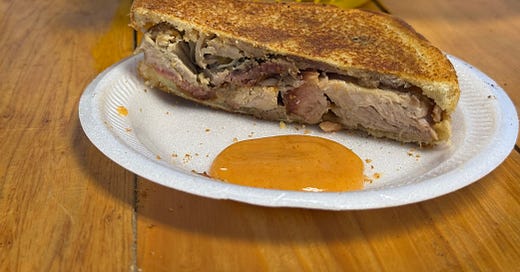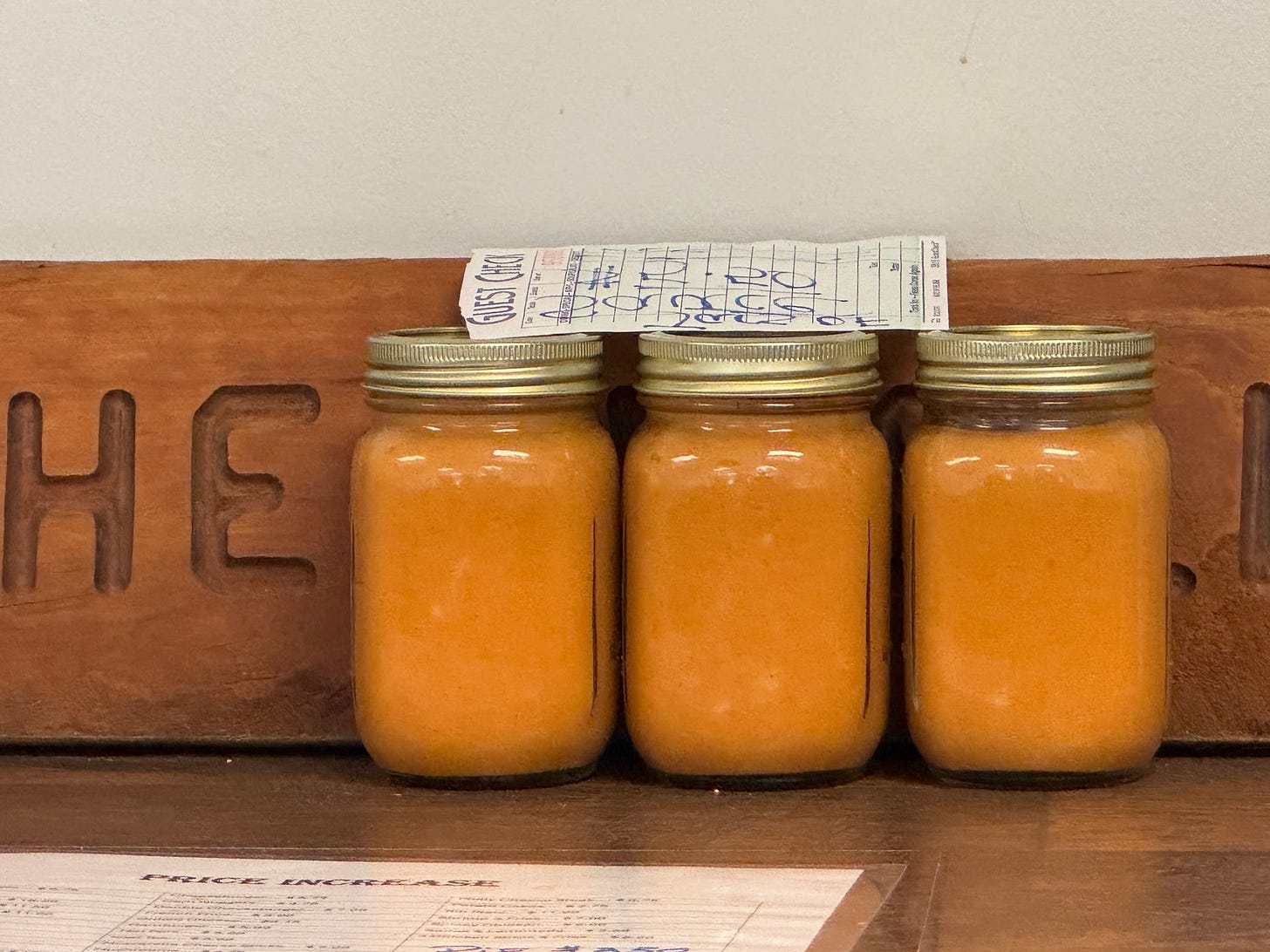
From the beginning, Cairo, Illinois, has been a victim of outsized expectations. The mile-wide intersection of the Ohio and the Mississippi, two of America’s great rivers, has inspired romantic ideas since pre-Columbian mound builders were heaping earth on both sides. In 1818, speculators chartered a city there called Cairo, positioning it as the capital of a fertile region sometimes called Little Egypt.
The rest of the story is less romantic. It’s the story of a city that missed its chances again and again.
In its early years, Cairo (pronounced CARE-oh or KAY-ro) supposedly inspired the city of Eden in Charles Dickens’ Martin Chuzzlewit, a malarial fever dream of swindlers and scams. The Civil War helped usher in a decades-long economic boom, after the Union built Camp Defiance at the confluence of the two rivers, but that wasn’t enough. Cairo was passed over by railroads, then by highways. When the Civil Rights Movement arrived, Cairo, which had been a refuge for Black Southerners, didn’t rise to the occasion. It all but collapsed in a surge of horrific racial violence, hemorrhaging residents who left shuttered homes and businesses behind.
According to a friend who lives about an hour away, the city is being sold for parts. He says developers in the Sun Belt are using Cairo bricks to create a sense of history in their new communities.
The feeling of loss in Cairo is real, but it might be as much about what could have been as what actually was—a mourning for what the writer Mark Fisher calls “lost futures” that’s in the air all over the Midwest.
Cairo is not an “abandoned city,” as the first article I read about it claimed. It’s home to about 1,500 people, a few museums, an independent grocery store, and at least a few restaurants and food trucks. Its population has halved since 2008, but if not for the morbid attention from media outlets, I don’t know how much it would stand out from all the other Midwestern cities and towns with eerie gaps in their old commercial districts.
There is, however, one thing that’s undeniably unique about Cairo and the surrounding area—its barbecue sauce. Cairo barbecue sauce is vinegar-forward and flour-thickened, with enough body to cling to sliced (not pulled or chopped) pork shoulder.
You can order a version of it online, called “Cairo Bar-B-Q Sauce” and made from an old Cairo recipe in Murphysboro, an hour away. That brand-name sauce balances an apple cider vinegar bite with tomato juice, spices, and what tastes like a healthy dose of Worcestershire. But for the past seven years I’ve been thinking about a different version, one that hasn’t left home: the neon-orange sauce at Shemwell’s Barbecue.
Shemwell's has been open in Cairo since 1946, though you wouldn’t know it from the dining room. After a driver experiencing a seizure ran into the building several years ago, the interior was renovated in a familiar style that friends and I call “Home Goods chic.” Still, the house barbecue sauce has maintained its prickly integrity.
A note on that: Years ago, an editor objected to my description of another vinegar-based sauce as “prickly,” and we argued about it, because I thought it was the right word, even though it doesn’t sound completely pleasant. Recognizing that, Shemwell’s sauce is prickly, which makes it a mouthwatering pairing for fatty smoked pork. It has no sugar or tomato to cushion its intense acidity. “This is like eating a Warhead!” said my wife, Liz, when she tried it. It’s abrasive and spicy, like a viscous hot sauce boosted with citric acid.
I’ve wanted to learn more about it since I visited Shemwell’s in 2018. In 2020, I asked a Southern Illinois-based reporter to write this piece. He declined—too busy. Last spring, I tried to set up an interview with the makers of Cairo Bar-B-Q Sauce, who I thought could share some insight on the style. It fell through.
The only two recipes for a Cairo-style barbecue sauce that I could find online in 2018 were on discussion boards that no longer exist. When I made them then, they didn’t look or taste like what I remembered. That’s when I began collecting everything I could find about Shemwell’s and the Cairo barbecue sauce tradition in a digital file, including recipes, news clippings, and Yelp and Google reviews. Anytime I was anywhere near Cairo, I thought about going back. Once, I did, but Shemwell’s was closed.
Then, a few weeks ago, Liz and I made the trip. We sat at the counter. Talking about the sauce with a couple of employees, I confirmed three ingredients: flour, vinegar, and butter. I also picked up two jars for tasting.
Without those jars, I wouldn’t have taken my sauce recipe where it needed to go. As I worked on this recipe, the Shemwell’s sauce kept pulling me toward the extremes—tripling the cayenne, ditching the moderating influence of sweet paprika, replacing soft, sweet apple cider vinegar with rice vinegar, and then, finally, with white vinegar, which I haven’t used for anything but cleaning and pickling for a decade. That’s when I got it. If this isn’t the exact recipe, it’s a dead ringer in appearance and flavor.
The first time I went to Shemwell’s, my friends and I were the only customers, the pork tasted reheated, and I worried that it would soon be another casualty of Cairo’s long decline.
On a sunny Saturday afternoon seven years later, the dining room was almost full. The pork was so juicy and tender that I ordered a second sandwich for the road, against my better judgment. I asked about a photo of nine men that was up on the wall. “That’s the coffee group,” our server said. “They’ve been coming here for years. They come in every morning and talk about everything—politics, religion…” The men in the photo are actually the group’s second generation, she said. As we walked outside, another car pulled into the parking lot. A father and daughter got out.
With a name like Cairo, the city at the confluence of the Ohio and the Mississippi was supposed to be great—or, if not, an epic failure. It couldn’t be just another Illinois river town. Still, despite the echoes of “Ozymandias” on its downtown streets, it isn’t dead. With Shemwell’s, Cairo is holding onto something small but lively: one of the most distinctive barbecue traditions in America.
Cairo-Style Pork Sandwich
Inspired by Shemwell’s Barbecue, Cairo, IL
Makes 1 sandwich
Prep time: 2 minutes
Cook time: 5 minutes
Total time: 7 minutes
Like other barbecue joints in the region, Shemwell’s serves sliced pork on standard-issue white bread and griddles it in a sandwich press, which helps the sauce meld with the pork for tender, smoky bites laced with cayenne and vinegar.
The sandwich at Shemwell’s isn’t buttery, and I found that buttering the bread before toasting it made it richer than I liked, but you could certainly add butter. If you’re toasting without butter, as recommended, use a sandwich press or a nonstick skillet to prevent sticking.
Ingredients
2 slices soft white sandwich bread
4 oz. sliced smoked pork shoulder, from your local barbecue joint or homemade (for the most authentic sandwich, use roughly 1/4-inch slices, but nearly any slices will do)
2 tbsp. Cairo-Style Barbecue Sauce (below), plus more for serving
Preparation
Layer the pork on a slice of bread, mixing leaner and fattier slices if possible. Drizzle barbecue sauce over the pork (a squeeze bottle makes it easy, but you can use a spoon) and top with the second slice of bread. To toast: If using a preheated sandwich press, cook on high for 2-4 minutes, or until bread is crisp and golden brown. If using a nonstick skillet, toast over medium to medium-high heat for about 2 minutes per side, pressing lightly with a small cast iron skillet or a heatproof plate with a weight on top. The goal is to warm the filling and toast the bread to a crisp golden brown. Halve and serve immediately, with extra sauce.
Cairo-Style Barbecue Sauce
Inspired by Shemwell’s Barbecue, Cairo, IL
Makes about 2 cups
Prep time: 5 minutes
Cook time: 10 minutes
Total time: 15 minutes
Ingredients
1½ cups white vinegar
1 tbsp. salt
1 tbsp. cayenne
2 tbsp. unsalted butter, melted
¼ cup all-purpose flour
½ cup water
Preparation
In a small bowl, combine vinegar, salt, cayenne, and butter. Whisk until salt dissolves. Set aside.
In a medium saucepan over medium heat, whisk flour and water together until smooth. Cook, whisking constantly, until thickened to a paste-like consistency, about 2 minutes. Slowly add the vinegar mixture, whisking constantly to prevent clumping. (If you end up with a clumpy sauce, you can homogenize it with an immersion blender, or by carefully transferring it to a standard blender, taking care to vent the lid to prevent pressure buildup from the hot liquid. The easier option is to whisk aggressively from the beginning.)
Continue cooking over medium heat, whisking frequently, until sauce simmers and thickens to a thick, glossy texture, another 8 to 10 minutes. Remove from heat and let cool. Store in a sealed jar in the refrigerator for up to 2 weeks.
A big thanks to Andrew Anderson for letting me use one of his photos of Cairo, which is hanging up in my dining room alongside three other photos of his. (A fifth is in my office, above my desk.) I’ve been a fan of his images of the small-town Midwest and South for years.






